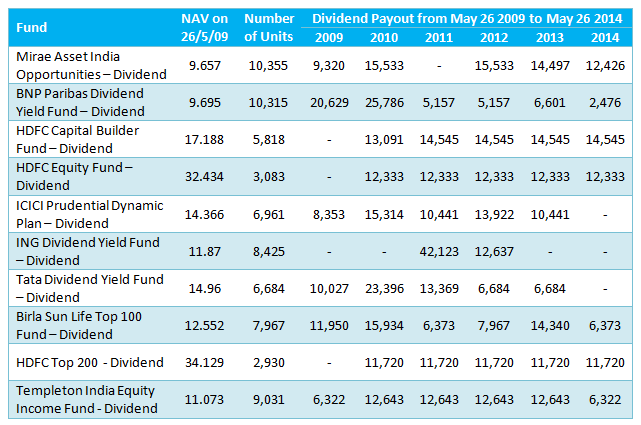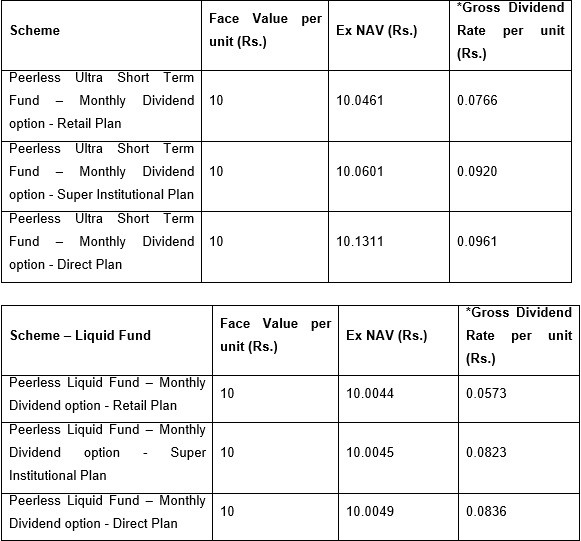Mutual Funds and Dividends
Post on: 19 Май, 2015 No Comment

W e began our series on dividend investing by examining the ins and outs of dividends. Today we continue the series by looking at how dividends work with mutual funds and whether the yield on a fund should be a key consideration in our investing decisions.
This topic came to light from an email I received from a podcast listener well call Frank:
Hi Rob,
Im a 30 year old investor and Ive been listening to your show since your 30 day money challenge. It really motivated me. I greatly appreciate all the valuable information you have been providing. Im new to investing and I have learned a lot this year. I was particularly interested in podcast number 28 where you explained the importance of keeping your fees low .
Currently Im invested in various American Funds and Ive been thinking about reinvesting in a few Vanguard index funds. After explaining my reasons to my financial advisor, she is quick to point out that while the fees of lets say VTSMX (.17% expenses) are low, the total reinvestment isnt as great as that of for example ANCFX (.63% expenses) which Im currently invested in.
She is basically saying that even though the fees are higher I will still make more money in the long term. As a listener of your podcast this idea raises a red flag. She mentioned that some funds with low expenses might not take a lot of money out up front, but instead take it out on the back end by not reinvesting as much back. This is the area where I am confused. Could you expand on this? Is she right that getting greater dividends is better than keeping my costs low?
Franks email raises a number of questions. Do funds with higher fees outperform less expensive funds? Do higher yielding mutual funds outperform those with lower dividend yields. And how do you check the dividend yield of a mutual fund, anyway?
In the podcast I cover the relationship between dividends and total return of an investment. You can listen to the podcast here:
For those that prefer the written word, lets dive into the details.
How to find the dividend yield of a mutual fund
As a starting point, lets cover mutual funds and dividend yields. When the stocks owned by a mutual fund payout dividends, that income is past on to the mutual fund shareholders (although some of the income may also be used to pay the funds expenses). As a result, just like investing in individual stocks, investing in a stock mutual fund or ETF will generate dividend income.
The easiest way to check the dividend yield of a fund or ETF is to use a free tool like Morningstar. Using Morningstar we can quickly see the dividend yields for the two funds mentioned in Franks email. VTSMX has a yield of 1.66% and ANCFX yields 1.22% as reflected in the following screenshots:
Interestingly, the Vanguard fund has a notably higher dividend yield than does the American Fund. That doesnt, by itself, make the Vanguard fund better. But it is curious in light of the advisors view of dividend reinvestments. Regardless, using Morningstar is a simple way to quickly find the dividend yield of a fund or ETF.
Why higher dividends are not always best
As important as dividends are to a portfolio, they are only one piece of the puzzle. Ultimately what we should be focused on is total return after fees and taxes. Total return includes not only dividends from stocks and stock mutual funds, but also interest from bonds and capital appreciation from both stocks and bonds.

Further, high yielding stocks can often have lower total returns. The reason is that some high yielding investments offer anemic growth. A good example here would be a utility. With prices regulated by the government and intensive capital requirements, profit and dividend growth can be well below average. At the same time, yields on utilities can be very high.
The point here is not to criticize dividends. Rather, it is to underscore that dividends are just part of the picture. And lower yielding investments that offer greater growth potential can often out perform higher yielding but slower growth alternatives.
Finally, in taxable accounts dividends can trigger taxes. As investments yield higher dividends, your annual tax bill can rise. These taxes weigh on a portfolios returns over time.
In short, while the advisor is right to sing the praises of dividend reinvesting, its shortsighted to concluded that a higher yielding fund is better than one that pays out a lower yield.
Fees do not correlate to yield
Finally, the cost of an investment does not dictate the yield, as Franks advisor suggested. Funds with high fees can have much lower yields that less expensive investment options. And the opposite is true as well.
For example, Vanguard offers a low cost fund that focuses in dividend yield. Called the Vanguard High Dividend Yield Index Fund (VHDYX), this fund currently yields 2.75%. Its annual expense ratio is just 0.19%.
High yielding funds are popular among retirees trying to live off of the dividends. Yet they shouldnt have to pay an arm and a leg for these types of investment opportunities.
Final Thoughts
As with individual stocks, dividends are an important part of the total return of mutual funds and ETFs. Nevertheless, one cant reasonably evaluate a mutual fund based solely on the yield, anymore than you can evaluate a stock based just on the yield. Finally, low cost investment options are available, even for those looking for higher yielding funds.














